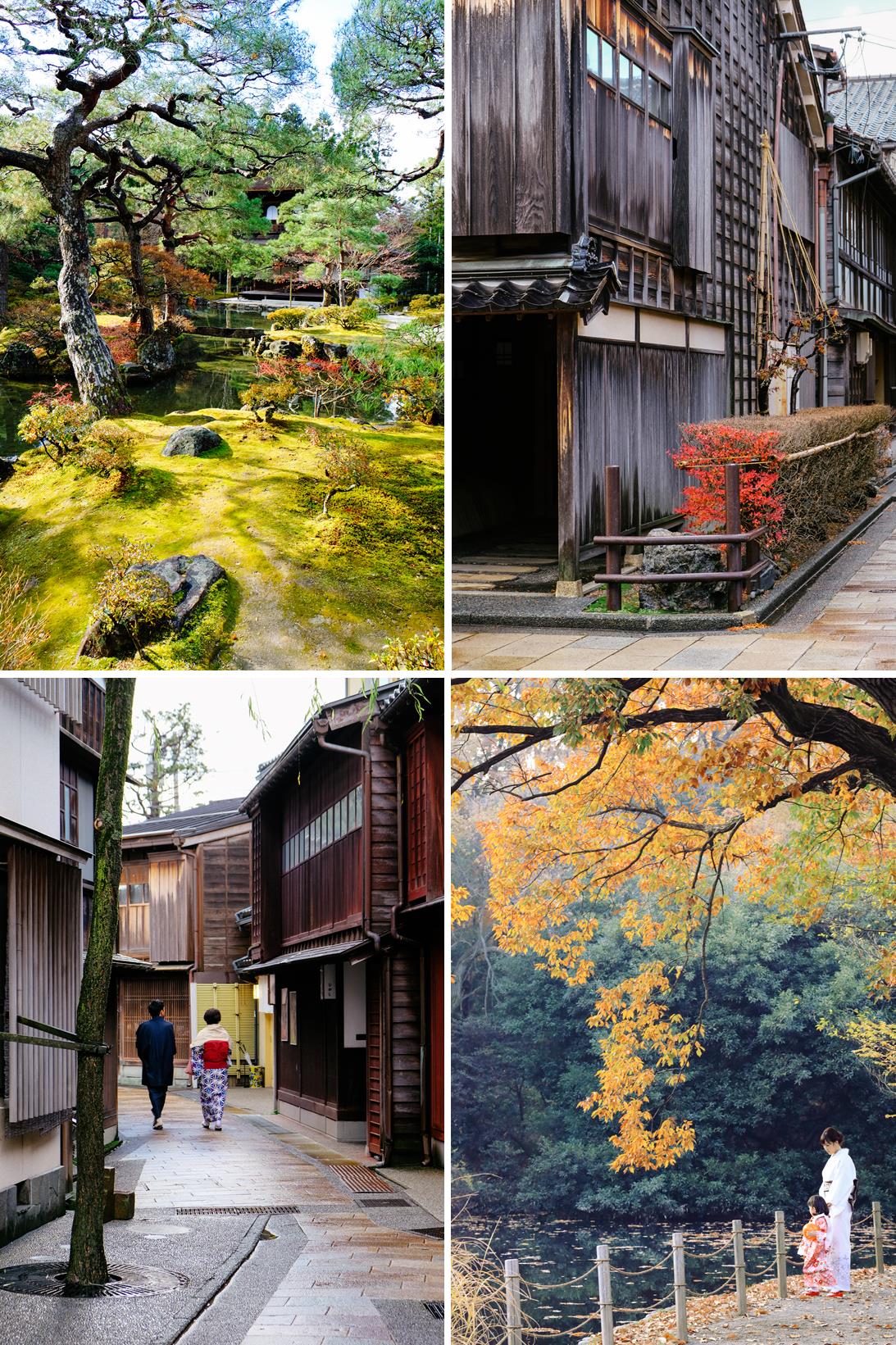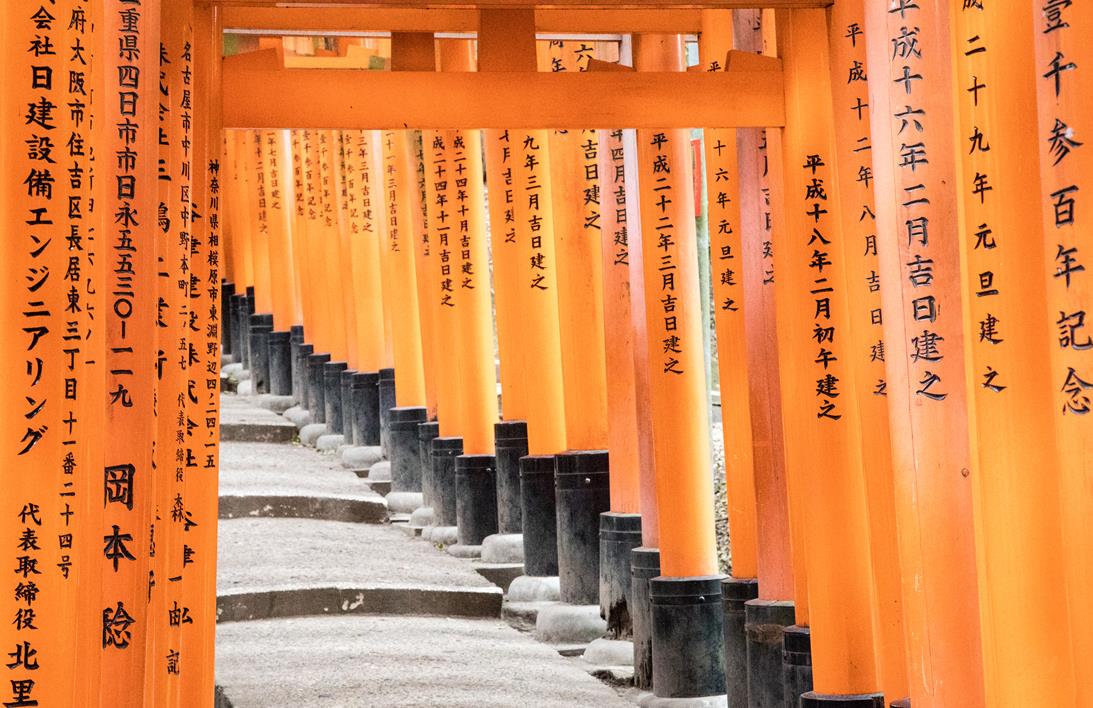For many years I’d always been put off visiting Japan. Not just because of the cost, but because I didn’t think it would live up to the vibrancy and excitement I love about travelling to places like India or South East Asia. But on a recent trip to the land of the rising sun with Julian, I am happy to say that my preconceptions were wrong. I found that Japan is wonderful in so many ways - serene, immensely cultural and bonkers all at the same time - a fascinating country full of eclectic experiences.
Key elements to Japan’s culture are definitely order, efficiency and politeness. But instead of finding this boring I actually rather loved it. It’s so refreshing having people stop in the street and genuinely want to help you, without taking you where you want to go via a cousin’s shop, or expecting to be paid in return. Japan’s no tipping policy is a breath of fresh air.
Despite many locals not speaking English, we didn’t find this a barrier since their friendliness and our extravagant hand signals and smiles got us through. Whilst travelling around is a breeze, once you know how it all works. There isn’t even any hanging around at airports required, since the best way to travel around Japan is by the excellent public transport system. On our trip we utilised trains, buses and ferries. Signs are in English, the underground system was actually easier to navigate than in London, the tannoy announcements in clipped English were both helpful and audible and everything runs like clockwork.
Japan is a big country and one of the hardest things about a trip there is deciding on what to do in the time you have. Despite spending 3 weeks in Japan, Julian and I only scratched the surface of the main island of Honshu, which is actually the size of the UK. You won’t cover everything on a first trip to Japan, so don’t even try. Settle on things that appeal, whether that’s glimpsing Mount Fuji, sampling the freshest sushi, riding the super-fast bullet train, spotting kimono clad Geisha, sleeping on a futon, or taking to the powder in the ski resorts of Sapporo.
We travelled self-guided throughout, but to ensure a successful trip, local help on the ground is really important. We had a guide for our first day in certain locations to orientate us, but it also totally enhanced our experience, whilst giving us so many hints and tips to help us get around independently afterwards. It also helped that we had everything planned in advance, with all transport booked so that we could concentrate on exploring instead of wasting time in booking offices.
Over the next couple of months I’ll be covering what Julian and I got up to on our fantastic trip - just a few of our highlights to whet your appetite.
Finding the unexpected in Tokyo
Most trips to Japan start or end in Tokyo. Before visiting, the images I had in my head were all “Lost in Translation” - the mad Shibuya Crossing, neon lights, skyscrapers and streets awash with white masked commuters. Don’t get me wrong, there is plenty of all that.
But for everything that’s bright, fast and jangly, you’ll find centuries old traditions woven seamlessly into the fabric of the Tokyo’s cutting edge exterior and so many places to get away from its frenetic side. There are spacious tree lined roads.
Beautiful gardens such as Hamariku. Right in the heart of the city, they are surrounded by skyscrapers, but once inside it’s a haven of tranquillity. We were so lucky to find that many of the trees were still flourishing with the rich and vibrant autumn colours.
The city is full of shrines and temples which come in all shapes and sizes, whilst the experience differs depending on the sect behind it. Some are very commercial like Senso-ji where the approach is through an avenue of knick-knack selling stalls, whilst Meiji-jingu is a much more serene affair set in stunning gardens.
I certainly never expected to be able to peacefully cruise through the heart of the city between major sights. Nor did I expect to be jumping in and out of taxis with white gloved drivers and doily covered seats in such a high tech city. Tokyo really is a city of huge contrasts.
Marvelling at Mount Fuji
On an exceptionally clear morning in Tokyo Julian and I sat on the balcony of our hotel having coffee and chatting about what we were going to do that day. Far away in the distance, but clear enough to see peeking out between the buildings, Mount Fuji first showed itself to us.
After Tokyo we headed to Hakone National Park, touted as one of the places to get the best views of Mount Fuji. Alas for us, the weather wasn’t playing ball, but Hakone itself was well worth the trip and there’s some great hikes to be had there. However given our viewing in Tokyo we left Hakone happy, despite having no up close sighting of the famed snow-capped Mount. Then it happened. Whilst whizzing through the countryside on the Shinkhansen bullet train, Mount Fuji appeared in all its glory. We were the only non-Japanese people in the carriage. Everyone else sat there oblivious to how great the view was, but were very gracious as we scrambled over them to get the best shot.
Skirting the Alps
On our trip we obviously included the classics, but Julian and I wanted to try some places not usually included on a first visit itinerary to Japan. So we headed north to the edge of the Japanese Alps and the town of Takayama. There we visited the beautiful district of Sanmachi Suji with its sake breweries and wonderfully preserved old merchant houses.
We also enjoyed taking a guided bike ride out in to the countryside around paddy fields and villages, to get an understanding of rural Japanese life.
Next we headed to Kanazawa, stopping en-route to take in the rather lovely snowy scene over the UNESCO protected village of Shirakawago, a secluded mountain village known for its Gassho-zukuri farmhouses built in a pyramid shape to withstand heavy snow.
Kanazawa is a historic and cultural gem set on the Sea of Japan coast. It has the stunning Kenroku-en, which is one of Japan's top three garden, and one of its best preserved geisha districts, Higashi-Chaya-Gai.
Run Kyoto
Kyoto is Japan's cultural heart, steeped in ancient traditions and offers a complete immersion into its past. It was once Japan’s imperial capital and is full of Buddhist Temples, Shinto Shrines, palaces and gardens with their painstakingly raked pebbles, seas of moss and gentle water features.
However it does receive a lot of tourists (both overseas and locals) and so trying to visit the main sights can be a little frustrating. The best thing to do? Get up early and run Kyoto. So at 6:30am sharp we set off with the General Manager of our hotel.
We jogged in and out of temples without a soul in sight as the first snow of the season fluttered around.
Got the coveted picture of hundreds of red torri gates at the usually tourist heaving Fushimi Inari Shrine.
Two hours later we had ticked off most of our sightseeing list without a selfie stick in sight and I have to say, it was one of the best experiences of the whole trip, bordering on the spiritual. Cycle Kyoto is also available for non-runners.
There will be more highlights of our journey across Japan in next month's Newsletter. But in the meantime, if you are interested in a trip to Japan, please do get in touch and I can put together a curated taste of the cultural richness and diversity of this wonderful country for you.
{Pictures by Lesley-Ann and Julian}


















